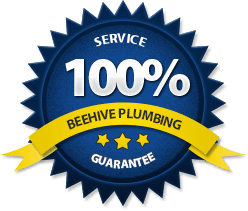Water is starting to become scarce as the years go by. With the effects of human-induced climate change, conserving water is a crucial step.
The need for clean water is a more pressing concern, sometimes even more than clean air. If you want to do your part, it’s crucial to save water. Even if you don’t like joining such advocacies, saving water can give you great benefits long-term.
If you want to save water and money too, water saving toilets are the way to go. Even then, are they worth it?
Take a look below as we give you everything you need to know about water saving toilets.
1. What Are Water-Efficient Toilets?
If you are already living in a newer home, chances are you are already using water saving toilets. Those who got their home up in the 2000s will likely have water saving toilets. What are they though?
These toilets don’t consume too much water when you flush them. This works by using dual-flush technology.
Dual-flush toilets are self-explanatory. They use two types of buttons that flush different from each other. The first button is a full-flush that takes the entire content of the tank, while the second button is an efficient low-volume flush that uses much less water.
Using the low-volume flush is great to do a fast drain that saves you from excess water consumption. Why should you save money on your toilet’s water?
Older full-flush toilets use as much as 3.5 gallons per flush. This is part of the mandate of the Energy Policy Act to ensure we don’t waste water.
Newer dual-flush toilets have far less water consumption nowadays. Many clock in as much as 1.6 gallons per flush, equating to 9.1 gallons per person per day.
2. Advantages of High-Efficiency Toilets
One of the best advantages of low-flow toilets is they are great additions to energy-efficient living. They reduce your consumption and save your money in the long run.
With a family with four people in it, you will save as much as 22,000 gallons of water per year. This can save people as much as $2000 over the span of the toilet’s lifetime. You reduce your impact on the environment, which is a small but important contribution.
If you’re using a dual-flush toilet, the short flush button uses a design to flush liquids. This uses only half of the contents of the tank, around 0.8 gallons on average. The full-flush, with its new design, will only use up to 1.6 gallons.
3. Different Types of Efficient Toilets
When using water saving toilets, there are different designs that you can choose from. These are:
- Gravity-fed toilet tanks
- Two-button flush tanks
- Power-assist or pressure-assist tanks
Each of these toilets have their own advantages, depending on which one you use.
Gravity-Fed Toilet Tanks
Gravity-fed toilet tanks are the most common styles that you can find. These have a single flush that relies on the volume and weight of the water to flush waste material. This tends to empty the entire tank, so you will have a consistent 1.6-gallon full-flush each time.
Some gravity-fed toilet tanks will have as small as a 1.2 gallon per flush. These use the powerful flush to wash off the contents of the ultra-high efficiency toilet. Modern designs can take advantage of this smaller amount of water and do its job.
Many toilets that use the gravity-feed tank are inexpensive. They don’t need special designs for extra efficiency, so engineering should not cost you too much.
Two-Button Dual Flush Tanks
Two-button flush tanks are the designs we discussed. This uses the two-button system, using 0.8 gallons for short-flush and 1.6 gallons for full-flush.
These toilets can be a bit more expensive than your average toilet. This, however, pays off during the entire lifetime of the toilet itself. The water you save from efficient toilets pays off for the extra you add to the upfront cost.
Power-Assist/ Pressure-Assisted Toilet Tanks
Power-assist or pressure-assist toilet tanks are some of the most expensive and sophisticated toilets. These have very little to no standing water at all. This removes the waste material using a powerful jet of water that can be more expensive and noisy.
Many power-assist toilets are in specialized areas like airplane lavatories. These are among the most uncommon toilets you’ll find in homes or even commercial establishments.
4. Is a Water-Efficient Toilet Worth It?
Is having a water-efficient toilet worth it? The answer is a unanimous yes on all accounts.
When you’re using water-efficient toilets, you’re saving a significant chunk of money. Even if you’re not into the green movement, saving money by using less on flush water is crucial. It gives you a little extra wiggle room for people strapped for cash.
If you have a toilet with a WaterSense label on it, you’re looking at as much as 60% more savings. You can get a professional plumber to do the job and it won’t cost too much. This ensures it saves you cash, prevents leaks, and lasts for a reasonably long period.
A few extra dollars upfront for a water-efficient toilet can help in sustainability efforts. Now that clean water is more scarce, using less water and reducing carbon footprints is vital.
Make the Change to Water Saving Toilets Now
If you’re looking to get a water saving toilet, know that you will reap sure, superior benefits. You’re using far less water per flush, which means more savings and better energy-efficiency. If you’re looking to find the right toilet, check reviews or talk to a professional plumbing team.
Are you looking to understand more about your toilet? Need a new high-efficiency toilet installation or some work on your plumbing? You need a professional team of plumbers to do it.
Contact us now here at Beehive Plumbing. Get the best, most premier plumbing services in Salt Lake City today.













